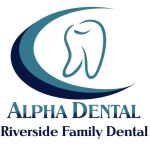What Is a Periodontal Cleaning? Everything You Need to Know About Gum Health
- Introduction to Periodontal Cleaning
- The Importance of Oral Hygiene and Periodontal Care
- How Periodontal Cleaning Works
- The Benefits of Periodontal Cleaning
- Periodontal Cleaning vs. Regular Cleaning: What’s the Difference?
- Signs You Need Periodontal Cleaning
- How to Maintain Gum Health After Periodontal Cleaning
- Conclusion: Prioritizing Your Oral Health
When it comes to maintaining good oral health, brushing and flossing your teeth regularly are essential steps. However, sometimes more extensive care is needed, especially when it comes to your gums. Periodontal cleaning is one such treatment designed to prevent and treat gum disease, which affects millions of people around the world. Gum disease, if left untreated, can lead to severe complications, including tooth loss. In this article, we’ll delve into what periodontal cleaning is, why it’s important, and how it differs from regular cleanings.
Understanding periodontal cleaning and the importance of gum health can help you make informed decisions about your oral care. This guide will also provide practical advice on how to maintain healthy gums after undergoing treatment.
1. The Importance of Oral Hygiene and Periodontal Care
Oral hygiene is critical for your overall health. While brushing your teeth twice a day and flossing regularly can go a long way in preventing oral diseases, it is not always enough to maintain healthy gums. The gums play a crucial role in supporting your teeth, and any issues with the gums can lead to serious complications, including tooth loss.
Periodontal disease (also known as gum disease) begins as gingivitis, which is the inflammation of the gums. If gingivitis is not treated, it can progress into periodontitis, a more severe form of gum disease. Periodontitis can cause the gums to recede, create pockets between the teeth and gums, and damage the bones that support your teeth.
This is where periodontal cleaning comes in. Periodontal cleaning helps remove plaque and tartar buildup that cannot be removed through regular brushing. By tackling the root cause of gum disease, this procedure can significantly improve your oral health and prevent further damage.
2. How Periodontal Cleaning Works
Periodontal cleaning, also known as scaling and root planing, is a non-surgical procedure used to treat gum disease. The treatment involves two primary steps:
- Scaling: The first part of the procedure involves scaling, where the dentist or dental hygienist removes plaque and tartar from the surface of the teeth, as well as from beneath the gums. This process helps clean the areas where your toothbrush and floss can’t reach.
- Root Planing: After scaling, root planing is performed to smooth out the rough surfaces of the tooth roots. This process helps to remove any remaining bacteria and allows the gums to reattach to the teeth more securely.
Periodontal cleaning is typically performed under local anesthesia to minimize discomfort, especially when cleaning beneath the gums. The procedure may require more than one visit depending on the severity of the gum disease and the number of areas that need treatment.
3. The Benefits of Periodontal Cleaning
Periodontal cleaning offers numerous benefits for your oral health. Here are some of the most significant advantages of the procedure:
- Prevents Tooth Loss: By treating gum disease early, periodontal cleaning helps prevent tooth loss caused by severe gum infection and bone damage.
- Reduces Gum Inflammation: Periodontal cleaning helps reduce inflammation and infection in the gums, which leads to better overall gum health.
- Improves Breath: By removing the bacteria and plaque buildup that causes bad breath, periodontal cleaning can leave your mouth feeling fresher.
- Promotes Healthy Gums: Periodontal cleaning helps your gums reattach to the teeth, creating a healthier foundation for your teeth.
- Boosts Overall Health: Gum disease has been linked to several health problems, including heart disease and diabetes. Treating gum disease with periodontal cleaning can help reduce the risk of these associated conditions.
These benefits highlight the importance of not only maintaining good daily oral hygiene but also seeking professional treatment when needed. Regular periodontal cleaning can help maintain a healthy smile for years to come.
4. Periodontal Cleaning vs. Regular Cleaning: What’s the Difference?
Many people are familiar with regular dental cleanings, which involve removing plaque and tartar from the surface of the teeth. While regular cleanings are essential for maintaining basic oral hygiene, they don’t address the deeper issues caused by gum disease. Here’s a breakdown of the key differences between periodontal cleaning and a regular cleaning:
- Depth of Cleaning: A regular cleaning typically focuses on the visible surfaces of the teeth, whereas periodontal cleaning targets the areas below the gumline where plaque and tartar can cause infection and gum recession.
- Targeted Treatment: Regular cleanings are preventive measures, while periodontal cleaning is used to treat existing gum disease and prevent it from progressing further.
- Duration: A regular cleaning usually takes about 30 minutes, while periodontal cleaning may take longer, depending on the extent of the gum disease and the number of areas that require treatment.
In short, while regular cleaning helps maintain healthy teeth and gums, periodontal cleaning is necessary for treating advanced gum disease and restoring gum health.
5. Signs You Need Periodontal Cleaning
If you notice any of the following signs, it may be time to schedule a visit to your dentist for a periodontal cleaning:
- Bleeding Gums: If your gums bleed when brushing or flossing, it’s a sign that you may have gingivitis, which can progress into more serious gum disease if left untreated.
- Bad Breath: Persistent bad breath, despite brushing and flossing, is a common symptom of gum disease.
- Receding Gums: If your gums are pulling away from your teeth, exposing the tooth roots, this could indicate the presence of gum disease.
- Sensitivity: Increased sensitivity to hot or cold temperatures, especially in the gums, may be a sign of gum damage.
- Loose Teeth: Advanced gum disease can lead to bone loss and tooth mobility. If your teeth feel loose, it’s essential to seek periodontal treatment immediately.
If you experience any of these symptoms, it’s important to consult with your dentist right away to prevent further damage to your gums and teeth.
6. How to Maintain Gum Health After Periodontal Cleaning
After undergoing periodontal cleaning, it’s important to follow a few key steps to maintain the health of your gums and prevent future issues:
- Brush and Floss Regularly: Continue brushing your teeth at least twice a day and flossing daily to remove plaque and prevent bacteria buildup.
- Use an Antibacterial Mouthwash: An antibacterial mouthwash can help reduce bacteria in your mouth and keep your gums healthy.
- Visit Your Dentist Regularly: Regular dental check-ups and cleanings are essential for maintaining good oral health and preventing the recurrence of gum disease.
- Eat a Healthy Diet: A balanced diet rich in vitamins and minerals can help promote gum health and overall oral hygiene.
By following these simple steps, you can ensure that your gums remain healthy after your periodontal cleaning and continue to support your overall oral health.
7. Conclusion: Prioritizing Your Oral Health
Periodontal cleaning is an essential treatment for anyone suffering from gum disease. It not only helps prevent tooth loss but also improves your overall health by addressing the root causes of gum disease. By understanding the importance of this treatment and recognizing the signs that it’s time for a periodontal cleaning, you can maintain a healthy, beautiful smile for years to come. If you’re due for a cleaning or suspect that you may need periodontal care, visit Dentistry Toothtruth for more information or to schedule an appointment.







 Comfort Dental South Independence – Your Trusted Dentist in Independence4.0 (334 review)
Comfort Dental South Independence – Your Trusted Dentist in Independence4.0 (334 review) Chaska Family Dental4.0 (266 review)
Chaska Family Dental4.0 (266 review) Gentle Family Dentistry5.0 (60 review)
Gentle Family Dentistry5.0 (60 review) Tend East Nashville4.0 (319 review)
Tend East Nashville4.0 (319 review) Riverside Family Dental4.0 (431 review)
Riverside Family Dental4.0 (431 review) Second Street Dental4.0 (423 review)
Second Street Dental4.0 (423 review) The Importance of Oral Health Education During Pregnancy for a Healthy Pregnancy
The Importance of Oral Health Education During Pregnancy for a Healthy Pregnancy Best Tips for Brushing Your Teeth Properly for Healthy Gums: Essential Techniques for Oral Health
Best Tips for Brushing Your Teeth Properly for Healthy Gums: Essential Techniques for Oral Health Why Skipping Dental Checkups Can Lead to Bigger Oral Health Problems
Why Skipping Dental Checkups Can Lead to Bigger Oral Health Problems Advantages of Porcelain Dental Restorations
Advantages of Porcelain Dental Restorations How Can Diabetes Cause Tooth and Gum Problems? Preventing and Managing Oral Health Issues
How Can Diabetes Cause Tooth and Gum Problems? Preventing and Managing Oral Health Issues Healthy Habits for Promoting Good Oral Health and Hygiene: Tips for a Healthy Smile
Healthy Habits for Promoting Good Oral Health and Hygiene: Tips for a Healthy Smile